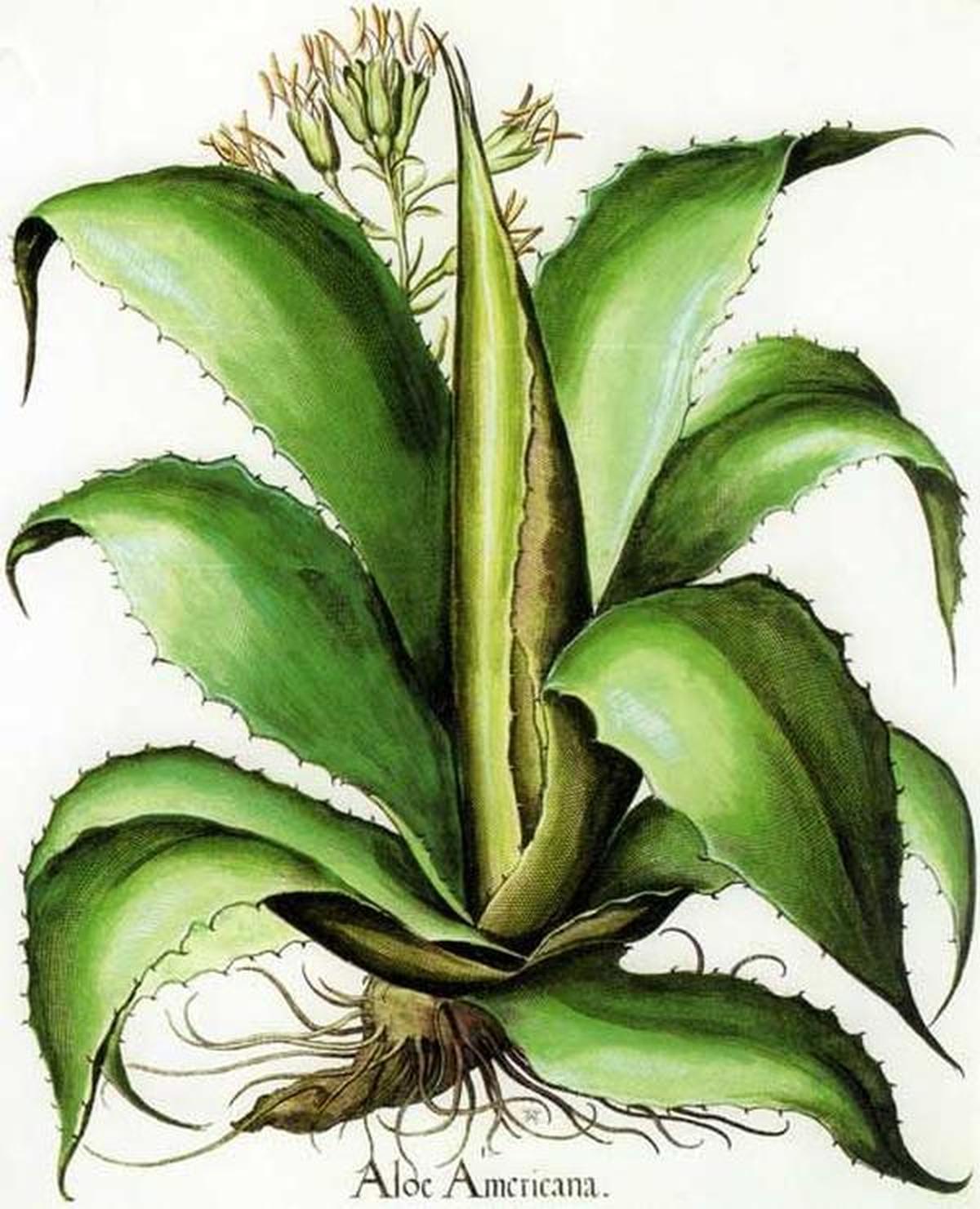Agave americana L.
AsparagaceaeLa pita es una planta característica de México y el Caribe. Traída de América por Cristóbal Colón, quien la confundió con el áloe, como muchos de los cronistas y naturalistas posteriores, se encuentra hoy totalmente naturalizada en las regiones de clima mediterráneo. Su nombre genérico proviene del griego agave (admirable), y realmente, como señala Romero Zarco, “causó admiración a los españoles que colonizaron América Central y Sur de los actuales EE.UU., observar que en plantas cuyo crecimiento parecía paralizado durante años, brotaba de pronto un tallo colosal, con ramas laterales en cuyos extremos aparecían densas inflorescencias”. De su savia se obtiene por fermentación el pulque y el mezcal, bebidas alcohólicas muy corrientes en México. Es muy similar a otra planta también muy popular y de diversos usos entre los habitantes nativos de México, el maguey. El franciscano español Fray Toribio de Benavente (1490-1569), también conocido como Motolinía o “El pobrecito” en náhuatl, narra en su Historia de los indios de Nueva España lo provechoso de esta planta del maguey -“gran virtud sale de este cardo”-, de la que se obtiene licor, se fabrican sogas y calzados, y con la que se puede elaborar papel. Cronistas como fray Toribio son fundamentales para conocer de primera mano las propiedades de la flora.
Procedencia
AmericanoCalendario
Hábitat
Morfología
 Planta
Planta
 Extendida
Extendida
 Simple
Simple
 Lanceolada
Lanceolada
 Otras disposiciones
Otras disposiciones
 Dentado
Dentado
 Aristado
Aristado
 Perenne
Perenne
